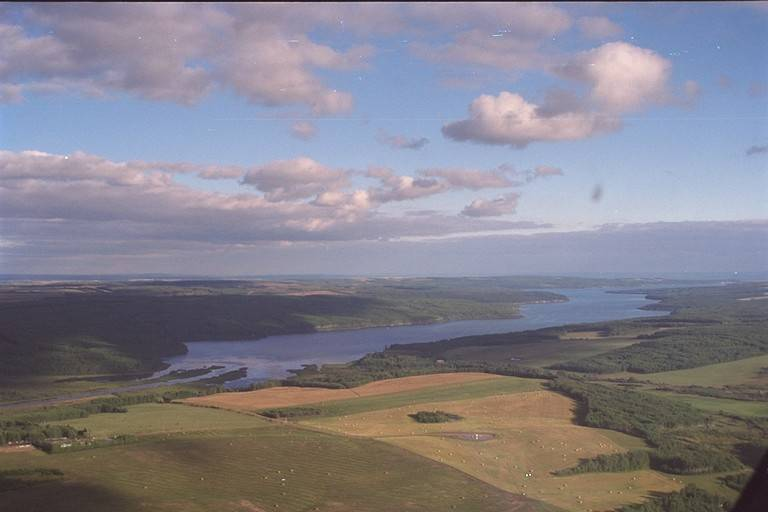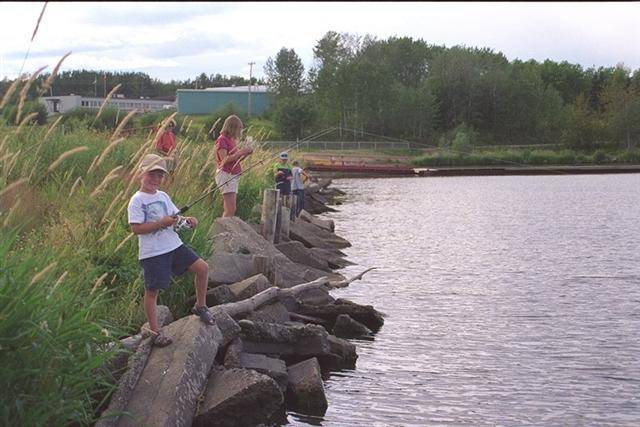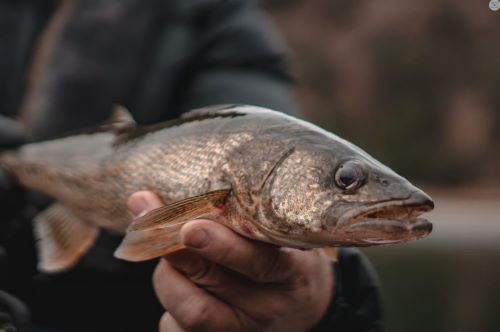Walleye are not the first fish most people think of when they consider angling in the lakes and rivers of B.C. But where walleye are present, they often support immensely popular harvest fisheries for their delicious white flesh. These voracious and opportunistic predators can also grow to trophy proportions when the conditions are right.
Distribution of walleye in Canada
Walleye are native across Canada from Quebec to British Columbia, and north to the Mackenzie River delta. They occur in a diversity of habitats including lakes, rivers, and reservoirs. They are one of the most highly sought-after recreational species in several provinces.
Historically, walleye also supported major inland commercial fisheries in large lakes east of B.C. Unfortunately, most of these fisheries were unsustainable, and decimated walleye populations. Still, a few such fisheries persist.
Here in B.C., native walleye populations only occur in the far northeast (including the lower Peace and lower Liard drainages, as well as the Hay River system). However, their popularity throughout North America resulted in numerous historic introductions of walleye into systems that didn’t originally contain this fish, including in B.C. In some cases, this had the desired effect of providing new recreational fisheries, but almost always at the peril of native species and ecosystems. The most well-known example of introduced walleye presence in our province is in the lower Columbia River mainstem. Unfortunately, this now sizeable walleye population preys upon many native fish species (including juveniles of the endangered white sturgeon).
What do walleye eat?
Almost immediately upon hatching, walleye larvae start feeding on zooplankton. Within their first year, they will usually shift first to benthic invertebrates, and then to fish by the time they are between five to eight centimetres in length (although sometimes very rapidly – within the first few weeks of hatching – depending on prey availability). Opportunistic feeders that will supplement their fish diet with invertebrates when fish are scarce, walleye are known to cannibalize smaller walleye.
Their growth is indeterminate – that is, they never stop growing! As a result of their impressive appetite and longevity (walleye can live to 20 years or more in northern climes), some populations can produce very big adults up to 80 centimetres long.
Charlie Lake walleye
Charlie Lake is a large, shallow, highly productive lake just north of Fort St. John. The walleye population in Charlie Lake is unique across the species’ North American range for its dietary preferences. Whereas most walleye populations are highly piscivorous (fish-eaters), Charlie Lake’s fish take advantage of the prolific invertebrate community. Stomach-content examinations show that, even as adults, most fish continue to feed mostly on zooplankton and invertebrates instead of fish. This likely explains the stunted size of these fish compared to their fish-eating neighbours elsewhere. The result? Lots of small to moderately sized fish that support a popular local fishery for the community of Fort St. John.


In 2018, the Freshwater Fisheries Society of BC funded a project to examine the walleye population in Charlie Lake. Charlie Lake has a checkered past, with multiple historic introductions of potentially invasive species including northern pike, yellow perch, rainbow trout, burbot, and spottail shiners, as well as walleye from Ontario. These introductions have resulted in losses of native minnow species, and major shifts in the aquatic ecosystem that can affect water quality. Such introductions would not be conducted now, and any new illegal introductions could result in fisheries closures. As it is impossible to turn back the clock regarding non-native introductions, the goal is to maintain quality recreational fishing at Charlie Lake for several species – most notably walleye – while preventing any further impacts associated with invasive fish species.
The challenge with managing the walleye fishery in Charlie Lake is to maintain the opportunity to harvest fish in the face of ever-increasing popularity and harvest pressure. During September 2018, provincial fisheries staff conducted a survey of the walleye population to look at abundance, growth, catch rates, and status over time. Results suggested that the walleye population can support current catch and harvest rates, and that long-term population sustainability is not at risk. Based on these results, it has been recommended that current regulations with limited daily quotas be retained. To ensure this status hasn’t changed, it was also recommended that future surveys to monitor the fishery and the population should be conducted within the next five years.
Please contact FrontCounter BC, Fort St. John number (250) 787-3415, for fisheries-related inquiries.
Author: Sue Pollard, Freshwater Fisheries Society of BC
Original publish date: April 12, 2019
